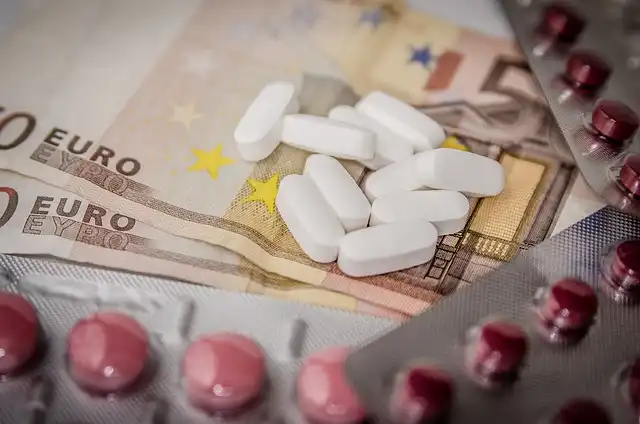AstraZeneca: Enhertu brought double revenue
- Normal Liver Cells Found to Promote Cancer Metastasis to the Liver
- Nearly 80% Complete Remission: Breakthrough in ADC Anti-Tumor Treatment
- Vaccination Against Common Diseases May Prevent Dementia!
- New Alzheimer’s Disease (AD) Diagnosis and Staging Criteria
- Breakthrough in Alzheimer’s Disease: New Nasal Spray Halts Cognitive Decline by Targeting Toxic Protein
- Can the Tap Water at the Paris Olympics be Drunk Directly?
AstraZeneca: Enhertu brought double revenue
- Should China be held legally responsible for the US’s $18 trillion COVID losses?
- CT Radiation Exposure Linked to Blood Cancer in Children and Adolescents
- FDA has mandated a top-level black box warning for all marketed CAR-T therapies
- Can people with high blood pressure eat peanuts?
- What is the difference between dopamine and dobutamine?
- How long can the patient live after heart stent surgery?
AstraZeneca: Enhertu brought double revenue
On July 28th, AstraZeneca released its second-quarter and half-year report for 2023.
Despite a significant decline in sales of their COVID-19 products in the first half of the year, AstraZeneca still managed to achieve better-than-expected growth due to strong performance in various areas, such as oncology, renal and metabolic diseases, and rare diseases.
In the second quarter, the company’s revenue reached $11.416 billion, marking a 9% year-on-year increase. In the first half of the year, the total revenue amounted to $22.295 billion, showing a 4% year-on-year growth.
Among their products, the most promising performer was the HER2 ADC drug, Enhertu, which exhibited a growth rate of over 100% compared to the previous year.
Enhertu’s global sales for the first half of this year reached $1.169 billion. With its continuous expansion into other indications, it is on track to become a blockbuster drug with annual sales potentially exceeding $10 billion.
Additionally, the anti-tumor drug, Osimertinib, remained AstraZeneca’s top-selling product with sales of $2.915 billion in the first half of the year, a 12% increase compared to the previous year.
However, the SGLT-2 inhibitor, Dapagliflozin, showed even stronger growth momentum with a 40% increase in sales, reaching $2.835 billion, and is set to become the next top-selling product, possibly surpassing Osimertinib.
Thanks to the success of several blockbuster drugs, AstraZeneca, which was once facing patent cliffs, has entered a new phase of prosperity and growth.
AstraZeneca: Enhertu brought double revenue
Notably, the highly anticipated HER2 ADC drug, trastuzumab deruxtecan, brought in $580 million in revenue for AstraZeneca in the first half of the year.
The total sales of trastuzumab deruxtecan have also reached $1.169 billion, successfully surpassing the billion-dollar blockbuster drug threshold.

With Enhertu continuously making strides in other indications, it is on track to become a super blockbuster with annual sales exceeding $10 billion, perhaps only a matter of time.
In the CVRM (Cardiovascular, Renal, and Metabolism) segment, the revenue for the first half of the year reached $5.2 billion, a 20% year-on-year increase.
Among them, Farxiga stands as the pillar product for this segment, with sales of $2.804 billion in the first half of the year, a 33% year-on-year increase.
Although Tagrisso remains AstraZeneca’s “bestseller,” with sales of $2.915 billion in the first half of the year, a 12% year-on-year increase, the growth momentum of Farxiga is even more robust (40%), with sales reaching $2.835 billion, making it the potential next “bestseller” for AstraZeneca, possibly surpassing Tagrisso.
In the rare disease field, the first-half revenue reached $3.819 billion, a 12% year-on-year increase. This revenue is mainly contributed by two products, Imfinzi and Ultomiris.
Despite a 16% decline in Imfinzi sales, thanks to the expansion of Ultomiris’ new indications, new market expansion, and the successful transformation of Soliris, Ultomiris’ revenue reached $1.363 billion in the first half of the year, an impressive 64% increase.
Meanwhile, AstraZeneca continues to invest in the rare disease field. On the same day as the financial report release, AstraZeneca’s rare disease subsidiary, Alexion, signed an agreement with Pfizer to acquire early-stage rare disease gene therapy assets for a total consideration of up to $1 billion.
As of now, AstraZeneca is conducting more than 120 late-stage clinical trials. According to the company’s statements, this year’s Phase III trials may include 10 potential blockbuster drugs.
(source:internet, reference only)
Disclaimer of medicaltrend.org
Important Note: The information provided is for informational purposes only and should not be considered as medical advice.



